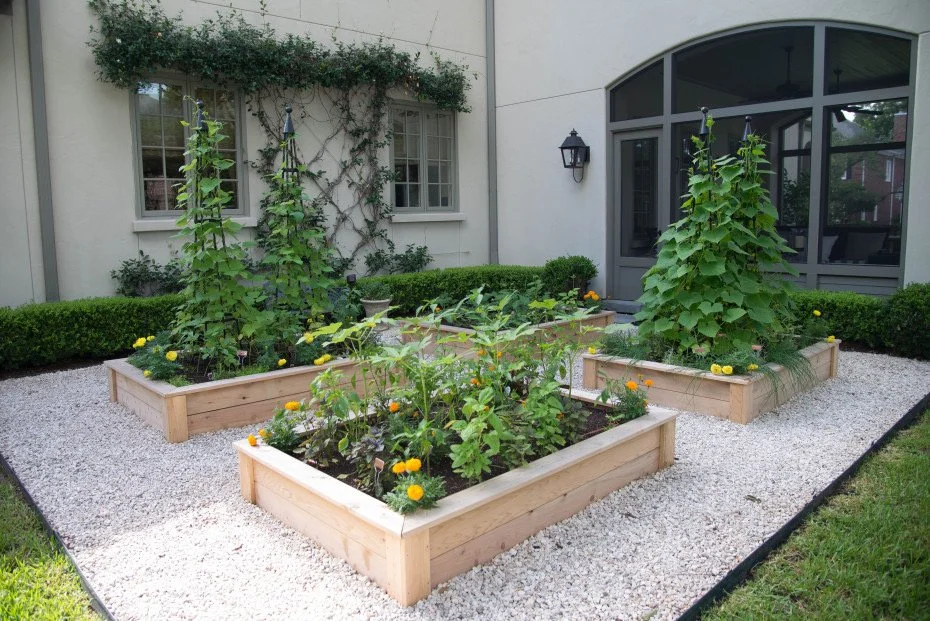Where gardening, homesteading, family, and simple sustainable living all come together.
Beginner’s Guide to Gardening in North Carolina’s Piedmont
Gardening in North Carolina can feel overwhelming if you’re just starting out — the heavy clay soil, unpredictable weather, and endless plant choices can leave anyone second guessing. But I want you to know: you can grow a thriving garden here, no matter your space or budget.
Gardening in North Carolina can feel overwhelming if you’re just starting out — the heavy clay soil, unpredictable weather, and endless plant choices can leave anyone second guessing. But I want you to know: you can grow a thriving garden here, no matter your space or budget.
In this guide, I’ll walk you through the basics I share with all my coaching clients.
1. Start with the Soil
North Carolina’s Piedmont region is famous (or infamous!) for its red clay. In-ground gardening is absolutely doable, but it will cost you in the long run — not just in money for endless soil amendments, but in the time and energy it takes to keep that soil balanced and workable. Clay compacts easily, drains poorly, and can frustrate even experienced gardeners.
That’s why I encourage most beginners to start with raised garden beds. Yes, there’s an upfront cost to build and fill them, but the payoff is huge:
You get complete control over your soil from the start.
Weeds are less of a problem.
Beds warm up earlier in spring and hold moisture better in summer.
Success comes faster, with fewer headaches, so you build confidence and momentum.
Think of raised beds as an investment in your garden journey. Do it right once, and you’ll enjoy seasons of success.Be clear, be confident and don’t overthink it. The beauty of your story is that it’s going to continue to evolve and your site can evolve with it. Your goal should be to make it feel right for right now. Later will take care of itself. It always does.
2. Plant for the Season
One of the greatest gifts of gardening in Zone 8a is that we can grow food year-round with a little preparation and patience. Spring and fall bring cool-weather crops like leafy greens, peas, and carrots. Summer bursts with tomatoes, peppers, squash, and okra. Even in winter, you can harvest kale, collards, and root crops if you plan ahead and use row covers or cold frames.
When you understand our four true growing seasons, there’s always something to look forward to in the garden. With a seasonal mindset, you’ll never have to experience that long “off season” many gardeners face elsewhere.
3. Water Wisely
Irrigation isn’t a luxury in our region — it’s a necessity. Between scorching summer heat and unpredictable rainfall, your plants can quickly suffer from being under-watered or over-watered.
A simple drip irrigation or soaker hose system will:
Save you hours of hand watering.
Deliver water right where plants need it — at the roots.
Keep foliage dry, reducing disease pressure.
Help you grow stronger, more resilient plants.
If you want to save your sanity (and your garden), make irrigation part of your setup from the beginning.
4. Keep It Simple
The easiest way to get overwhelmed in the garden is to do too much, too fast. Instead:
Choose 3–5 vegetables or herbs your family loves to eat.
Make a simple plan that fits your space, budget, and time.
Stick to that plan for your first season.
Gardening is a long game. You’ll learn so much by focusing on a small, manageable plot — and you can always add more in future seasons. Consistency is where success happens.
Final Thoughts
Whether you’re digging into clay or setting up raised beds, gardening in North Carolina’s Piedmont is rewarding, humbling, and deeply nourishing. With the right start, you can harvest food year-round, save yourself time and stress, and enjoy the process along the way.
👉 Ready to take the next step? Join my free beginner gardener community where I share seasonal tips, challenges, and hands-on workshops to help you grow with confidence.




